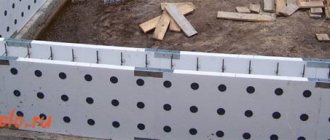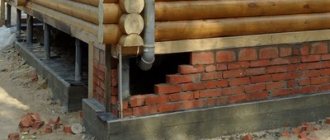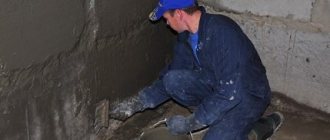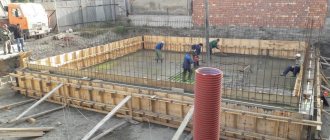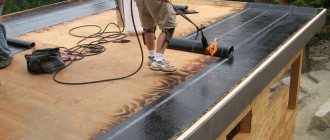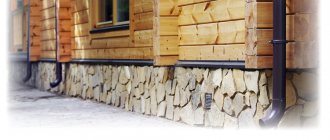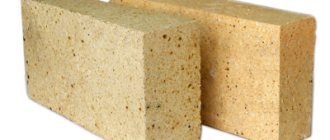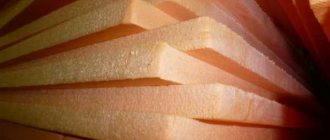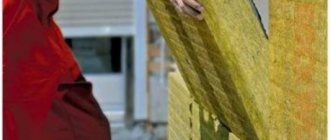What sand is used in construction
Sand is used in the manufacture of concrete and plaster mortars as an inert filler that does not react chemically with other components. Concrete is one of the main materials in construction, so sand is mined everywhere and on a huge scale. It is conventionally divided into natural and artificial. There may be different deposits in one area, which allows you to choose which sand to buy for the foundation.
Natural sands
They are called large masses of small mineral grains lying at the bottom of rivers, lakes and seas, as well as dune, mountain and gully loose sedimentary rocks. They differ in composition, size and shape of grains:
- Sea peso is very fine, with fraction sizes up to 1 mm. It contains various impurities, shells consisting mainly of limestone, so it must be washed before use.
Extraction of sea sand Source piterpesok.ru
- Sand mined from the bottom of large lakes has similar properties and characteristics . It contains even more mineral and organic impurities, which must be eliminated in order to obtain high-quality concrete.
- River sand , unlike sea and lake sand, is constantly washed by the current, so it is the cleanest, with a very small amount of clay, limestone and organic impurities. Its grain size is larger, but the shape, like the previous species, is smooth and round, which is explained by its long-term presence in water.
- Mountain and gully deposits are mined using open-pit mining, which is why they are called quarry deposits. This extraction method is the cheapest, and therefore the material from the quarries has the lowest price. But its quality for use in concrete mixtures leaves much to be desired due to the large number of impurities. They are removed by hydromechanical washing, obtaining washed material, or sifted through a whole system of sieves, removing organic inclusions and stones.
Development of a sand quarry Source onf.ru
If you choose what kind of sand is needed for the foundation - river or quarry, then the quality composition of river sand is better - it is cleaner and does not require additional sifting or washing. But quarry sand grains have an angular rather than a smooth shape, which is preferable for foundation mortars, since they are more durable. Therefore, treated quarry sand is often preferred to river sand, which even after washing is much cheaper.
Artificial sand
Natural deposits of sand are not available everywhere, so in some areas there is a shortage of this material. In addition, its mass production harms the environment. Therefore, it is allowed to use sand of artificial origin in construction, although it can be a stretch to call it such. The fact is that this product is obtained from hard rocks by crushing them. Most often these are screenings obtained during the production of crushed stone.
Screenings from crushed stone crushing Source kraftbeton.ru
Whether artificial sand is suitable for concrete work depends on the rock that has been crushed, the size of the grains, their strength, abrasion, dust content and other characteristics determined by laboratory tests. As a rule, it is used for the production of decorative solutions and the creation of textured surfaces for facades.
However, high-quality screenings obtained from suitable rocks using centrifugal impact crushers often have all the necessary properties and even improve the strength of concrete due to the rough cuboid-shaped grains that adhere well to the solution. This form is much preferable to that of polished and rounded grains of river sand.
What kind of sand is best to pour under the base?
To lay the bottom of a pit, you should not take the first sand you come across; there are rules and regulations for its selection. Three types of sedimentary rock are sold on the construction market.
Quarry - has low quality due to the large volume of impurities of clay and other substances. Its popularity is due to its low cost. Developers often use quarry sand in zero cycles, which is quite acceptable, but it is worth monitoring the quality.
Marine - its development is carried out from the bottom of the sea, so the sedimentary rock contains a lot of shells and impurities. Manufacturers perform mandatory cleaning of their product. It is also suitable for creating a pillow.
River sand is a universal type of sand used at all stages of construction. Due to natural grinding, it obtains the ideal particle shape, allowing you to make a reliable solution. The material is characterized by the absence of clay and organic compounds.
This type is the best option for a pillow under the foundation. The high cost of the material forces budget-conscious builders to abandon it in favor of a lower quality, but more affordable one.
How to choose
If there are several deposits in your area, you can choose which sand is best for a foundation cushion or for pouring a monolithic foundation without complex and very expensive laboratory tests.
Advice! In any case, ask the seller or supplier for documents on the material, which must reflect its origin, composition, density, humidity, grain size modulus.
Passport for construction sand Source www.tg-stroy.ru
What to pay attention to and by what criteria to choose a material depends on its purpose and the type of structure being built.
High-quality composition
In order for the concrete base to be strong, foreign impurities must not get into the solution, which over time begin to rot, react with cement and cause destructive changes in the monolith. And they get there precisely with sand, which can contain both various mineral inclusions and organic matter in the form of plant residues.
For example, the high clay content in bulk aggregate is not critical for masonry mortars - it even makes them more plastic and workable. But when choosing which sand is best for the foundation, it is necessary that it be no more than 5%.
If you doubt the quality of sand, you can conduct your own basic test. You need to pour it into a glass container to about a third of the volume, add water, mix well and let it sit for an hour. If after this time the water above the sand becomes clear, it can be used to build a foundation. If it remains cloudy, with dirt floating on the surface, then such filler is discarded.
Video description
You can clearly observe the experiment to determine the purity of sand in the video:
See also: Catalog of companies that specialize in the construction of foundations and facade materials
Fraction size
When determining the suitability of a material for a particular type of work, they use such a concept as particle size modulus. It shows the size of the sand grains, which largely affects the properties of the mortar:
- For example, very fine, thin and very fine sand with fraction sizes of up to 0.7 mm, 1 mm and 1.5 mm, respectively, are used to prepare finishing plaster mortars that form a smooth surface.
- When deciding what kind of sand is needed for a cushion under the foundation, preference is given to coarse-grained sand, with a grain size of 3-3.5 mm.
- A mixture of small (1.5-2 mm), medium (2-2.5 mm) and large (up to 3 mm) fractions is ideal for foundation concrete. Large particles provide good adhesion, and small particles fill all the voids.
Grain size can be determined visually using a regular ruler Source 1nerudnyi.ru
Density
High-quality material with a size module suitable for the construction of a foundation should have a density of about 1.5 tons per cubic meter. This characteristic must be indicated in the accompanying documentation. It is also possible to calculate it yourself.
To do this, you need to find out the weight of empty (m1) and loaded (m) transport by checking its weighing at the entrance and exit from the shipping area. The difference is divided by the number of cubes (V) of the purchased material and its density is obtained.
Formula for determining the density of sand Source www.vashdom.ru
Rules for choosing sand for the foundation
Sand is one of the particularly important components of the concrete solution from which the foundation is made. You should know that sand is considered a sedimentary rock, but artificial production of this building material is possible. In particular, we are talking about crushing stone or crushed stone. For this reason, you should understand the question of what sand should be used when building a foundation.
Learn more about how foundation settlement occurs.
The main criterion when choosing sand for a foundation can be called the type of material according to GOST; based on this, recommendations for the use of sand have been created:
- High-fine sand has a particle size of 3-3.5 mm. This material is an excellent solution for creating foundation pillows.
- Coarse sand with a fraction of 2.5-3 mm is recommended for use in the manufacture of high-grade concrete and cushions for foundations.
- Sand of medium and fine fraction, from 1 to 2.5 mm, can only be used for preparing concrete compositions. The use of such material to create foundation cushions is not permissible, since the risk of shrinkage in this case is quite high.
We advise you to read the article “How to calculate the volume of a foundation.”
When choosing sand for the foundation and cushion, the purity of the material is of great importance. You should pay attention to the presence of the following impurities:
- Vegetation. The sand may contain small branches and grass, which can significantly affect the quality of the concrete for the foundation and the load-bearing characteristics of the foundation cushion. Therefore, it is recommended to sift the sand before use.
- Clay. High-quality concrete and a durable cushion can be obtained by using sand that contains no more than 5% clay.
- Gravel. The presence of this component is allowed in the range from 0.5 to 0.7 percent of the total volume, provided that the particle size does not exceed 10 mm.
By the way, in a separate article we talked about which foundation is best to choose for a house.
Video description
The following video clearly demonstrates this method of determining density:
Humidity
The moisture content of the material is important for determining the proportions of the concrete mixture during its production. Recommended proportions for formulations of different brands imply that it is no more than 5%. If the humidity is higher, it is necessary to reduce the amount of water for mixing the solution. In addition, when purchasing wet material, you overpay for the missing volume.
The volume of water for mixing the solution depends on the humidity of the sand Source i2.wp.com
This indicator can also be determined at home by calcining 1 kilogram of the bulk mixture over a fire in a metal container for 30 minutes and weighing it again at the end of the procedure. The difference between the initial weight and the weight after calcination is divided by 100 to obtain the percentage of moisture.
For example, if after drying 0.85 kg of bulk mass remains, then its initial moisture content is 15%:
(1 – 0,85)/100 = 15.
After analyzing this data, you can already understand which sand is better for concrete on the foundation. It must be pure material with an acceptable percentage of impurities and an average particle size modulus of 2-2.5 mm. River sand has these properties, as well as quarry sand that has gone through sifting and washing. Contrary to popular belief, washed quarry sand is even preferable to river sand, since its grains of sand have sharp edges, which has a positive effect on the strength of concrete.
You can sift the sand and remove large pebbles from it yourself Source www.diy.ru
Determining the required volume of sand
When starting foundation work, you need to decide on the required volume of materials required. You need especially a lot of sand, since its content in the concrete solution is greater than other components; in addition, it is used to create a cushion for pouring the base.
It is not difficult to determine the required volume for backfill, knowing the dimensions of the future foundation in plan and the thickness of the cushion. It depends on the load on the foundation, the type of soil, the depth of its freezing and the groundwater level. This parameter is calculated specifically and indicated in the design documentation.
If you are building a house or other building without a project, you can take the recommended values: from 10 to 20 cm, no less, but no more. Next, multiply the selected thickness by the area of the base and obtain the required volume. However, it is taken into account that the pillow must be well compacted, which means that about one and a half times more bulk material will be needed.
There are no shoe marks left on a well-compacted surface Source i.ytimg.com
On a note! When choosing what kind of sand is needed to cushion the foundation, you can not take into account its moisture content, since for high-quality compaction each layer still needs to be moistened.
The volume of material for making concrete is calculated based on proportions that differ depending on the required grade. To do this, calculate the volume of the foundation in cubic meters and use special tables to determine how much sand is needed for this amount of solution.
Relative compaction coefficient
Carrying out numerous procedures for extraction, transportation, and storage, it is obvious that the bulk density changes somewhat. This is due to the compaction of sand during transportation, long-term storage in the warehouse, absorption of moisture, changes in the level of looseness of the material, and grain size.
In most cases, it is easier to use a relative coefficient - this is the ratio between the density of the “skeleton” after mining or being in a warehouse to the one it acquires when reaching the final consumer.
Knowing the standard that characterizes the density during mining, indicated by the manufacturer, it is possible to determine the final coefficient of the soil without conducting constant surveys.
Information about this parameter must be indicated in the technical and design documentation. Determined by calculations and the ratio of initial and final indicators.
Density
This method assumes regular deliveries from one manufacturer and no changes in any variables. That is, transportation occurs using the same method , the quarry has not changed its quality indicators, the duration of stay in the warehouse is approximately the same, etc.
To perform calculations, it is necessary to take into account the following parameters:
- characteristics of sand, the main ones are the compressive strength of the particles, grain size, caking ability;
- determination of the maximum density of the material in laboratory conditions when adding the required amount of moisture;
- bulk weight of the material, that is, density in the natural environment of location;
- type and conditions of transportation. The worst impact is on road and rail transport. Sand is less subject to compaction during sea deliveries;
- weather conditions when transporting soil. It is necessary to take into account humidity and the likelihood of exposure to sub-zero temperatures.
How to calculate density during excavation from a pit
Depending on the type of pit, the level of sand extraction, its density also changes. In this case, the climatic zone in which resource extraction work is carried out plays an important role. The documents define the following coefficients depending on the layer and region of sand production.
| Subgrade level | Layer depth, m | With advanced coating | Lightweight or transitional coatings | ||
| Climate zones | |||||
| I-III | IV-V | II-III | IV-V | ||
| Upper layer | Less than 1.5 | 0,95-0,98 | 0,95 | 0,95 | 0,95 |
| Bottom layer without water | More than 1.5 | 0,92-0,95 | 0,92 | 0,92 | 0,90-0,92 |
| Floodable part of the underlying layer | More than 1.5 | 0,95 | 0,95 | 0,95 | 0,95 |
In the future, on this basis, you can calculate the density, but you need to take into account all the effects on the soil that change its density in one direction or another.
When compacting material and backfilling
Backfilling is the process of filling a pit , previously dug, after the construction of the necessary buildings or carrying out certain work. Usually filled with soil, but quartz sand is also often used.
Tamping is considered a necessary process for this action, as it allows you to restore the strength of the coating.
To perform the procedure, you must have special equipment. Typically, impact mechanisms or those that create pressure are used.
backfilling
Vibrating stamps and vibrating plates of varying weights and power actively used in construction
Vibrating plate
The compaction coefficient also depends on the compaction and is expressed as a proportion. This must be taken into account, since as compaction increases, the volumetric area of sand simultaneously decreases.
It is worth considering that all types of mechanical, external compaction can only affect the top layer of the material.
The main types and methods of compaction and their effect on the upper layers of soil are presented in the table.
| Seal type | Number of procedures using the Proctor method 93% | Number of procedures using the Proctor method 88% | Maximum thickness of the treated layer, m |
| With your feet | – | 3 | 0,15 |
| Hand stamp (15 kg) | 3 | 1 | 0,15 |
| Vibrostamp (70 kg) | 3 | 1 | 0,10 |
| Vibrating plate – 50 kg | 4 | 1 | 0,10 |
| 100 kg | 4 | 1 | 0,15 |
| 200 kg | 4 | 1 | 0,20 |
| 400 kg | 4 | 1 | 0,30 |
| 600 kg | 4 | 1 | 0,40 |
To determine the volume of backfill material, the relative compaction coefficient must be taken into account. This is due to changes in the physical properties of the pit after sand is pulled out.
When pouring a foundation, you need to know the correct proportions of sand and cement. By clicking on the link, you will become familiar with the proportions of cement and sand for the foundation.
Cement is a special bulk material, which in its composition is a mineral powder. Here is about the different brands of cement and their applications.
With the help of plaster, the thickness of the walls is increased, which increases their strength. Here you will find out how long it takes for plaster to dry.
By extracting quarry sand, the quarry body becomes looser and gradually the density may decrease slightly. Periodic density tests should by a laboratory, especially when the composition or location of the sand changes.
For more information about sand compaction during backfilling, watch the video:
How to determine the density of the sand layer during transportation
Transportation of bulk materials has some peculiarities, since the weight is quite large and a change in the density of resources is observed.
Basically, sand is transported using road and rail transport, and they cause shaking of the load.
Transportation by car
Constant vibration shocks to materials act on it in a similar way to compaction from a vibrating plate. Thus, constant shaking of the load, possible exposure to rain, snow or sub-zero temperatures, increased pressure on the lower layer of sand - all this leads to compaction of the material.
Moreover, the length of the delivery route is directly proportional to compaction until the sand reaches the maximum possible density.
Sea deliveries are less affected by vibrations, so the sand retains a greater level of looseness, but some slight shrinkage is still observed.
Transportation by sea
To calculate the amount of building material, it is necessary to multiply the relative compaction coefficient, which is calculated individually and depends on the density at the starting and ending points, by the required volume included in the project.
How to calculate in a laboratory setting
It is necessary to take sand from the analytical stock, about 30 g. Sift through a sieve with a 5 mm mesh and dry the material until it reaches a constant weight. Bring the sand to room temperature. Dry sand should be mixed and divided into 2 equal parts.
Next, you need to weigh the pycnometer and fill 2 samples with sand. Next, add distilled water in the same amount to a separate pycnometer, approximately 2/3 of the total volume, and weigh again. The contents are mixed and placed in a sand bath with a slight slope.
To remove air, boil the contents for 15-20 minutes. Now you need to cool the pycnometer to room temperature and wipe it off. Next, add distilled water to the mark and weigh.
Next we move on to calculations. A technique that helps determine density and the basic formula:
P = ((m – m1)*Pв) / m-m1+m2-m3 , where:
- m – mass of the pycnometer when filled with sand, g;
- m1 – weight of an empty pycnometer, g;
- m2 – mass with distilled water, g;
- m3 – weight of the pycnometer with the addition of distilled water and sand, after getting rid of air bubbles
- Pv – water density
In this case, several measurements are taken based on the number of samples provided for testing. The results should not differ by more than 0.02 g/cm3. In case of large consumption of the received data, the arithmetic average number is displayed.
Estimates and calculations of materials and their coefficients are the main component of the construction of any objects, as it helps to understand the amount of material needed, and, accordingly, the costs.
To correctly draw up an estimate, you need to know the density of the sand; for this, information provided by the manufacturer is used, based on surveys and the relative compaction coefficient upon delivery.

